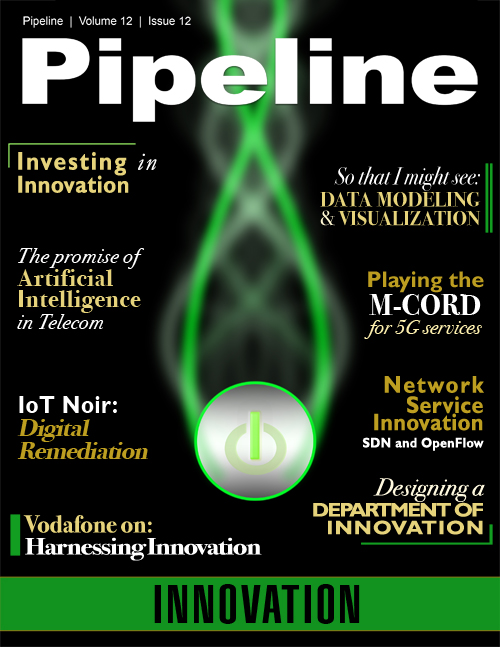Designing a Department of Innovation
By: Wedge Greene

Some decisions are both absolutely necessary to make and critical to success. With some few, the outcome of the decision might even impact the continued existence of an ICT company. How will this new technology impact my business? What can I do about these new market entrants that have started grabbing our traditional territory? Which is the best approach to satisfying my demanding customers? Most of what Pipeline publishes examines the problems and opportunities associated with many of these decisions.
There is no end to problems and challenges facing our industry. For example, how can telecom companies use their natural advantages to out think and out maneuver Over-the-Top (OTT) competition. Also many opportunities for new revenue are on the horizon, such as: 5G, the Internet of Things (IoT), Smart Cities, Virtual Reality (VR), and Clouds. So, how do Telco, Cable, and Information companies continue to innovate and evolve? Our industry has done so for a century, but the methods change with the times. Once our industry supported large dedicated labs that churned out invention after invention. Now, in a fast-moving age of scarce capital, innovation which occurs without strategic direction gets lost in the churn.
Famous public examples of innovation for me include “Friends and Family” and NGOSS. By its nature, successful innovation spreads to other members of our industry. Every few years another company launches a friends and family promotion with another twist on leveraging social networks as service distributors. NGOSS, an integration system, evolved into Frameworx, a design platform. The advantages of innovation are real but short lived. Successful innovation soon becomes adopted as norm by the industry. A single innovation is soon a procured startup. The process of continued innovation is the spine of an ICT industry leader.
The Wharton School, among the best business schools in the country, has codified Standards and Practices for Forecasting, in the 2001 J. Scott Armstrong’s handbook for making correct forecasts. It explains some, “One hundred and thirty-nine principles … used to summarize knowledge about forecasting.” Alternatively, Dr. Paul Werbos, winner of several prizes for contributions to neural networks, disagrees. He believes we should build systems that mimic how the brain includes “statistical principles which make it possible to build a universal system which learns to ‘predict anything’ with inputs far more complex than traditional learning or statistics systems ever could.”
How would you choose which of these approaches to use to assess the next big investment of time, capital, and human resources your company needs to make? Or, would you choose some other approach in a critical decision on where to focus strategic efforts? Many approaches exist, but this must be a scientifically rational approach and that specifically excludes deciding it with peers and vendors on the golf course.





















